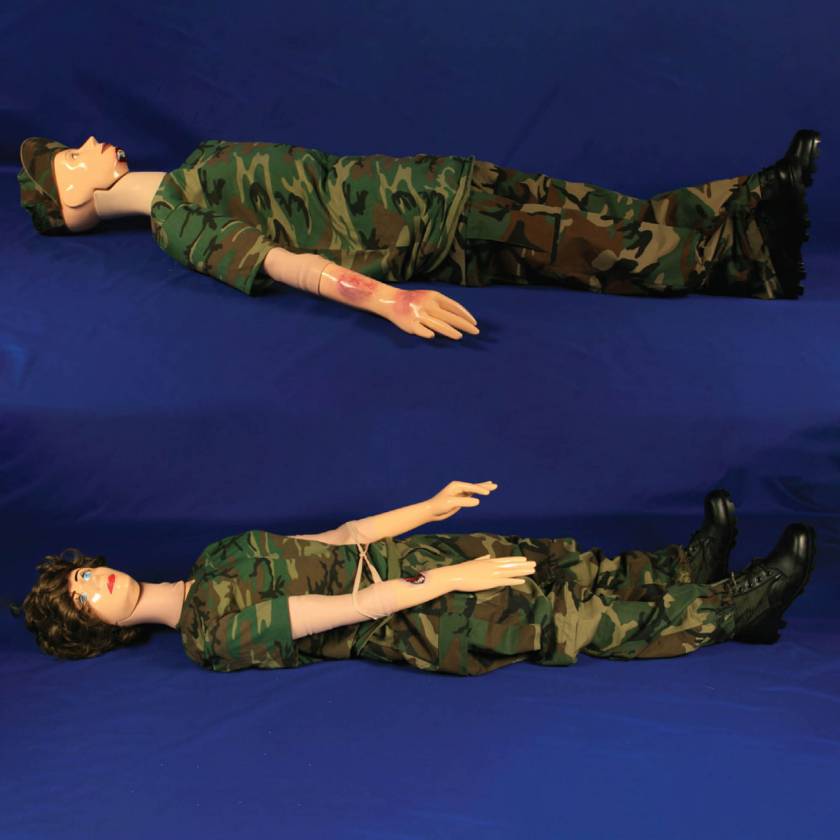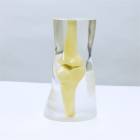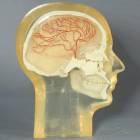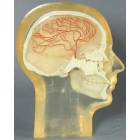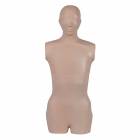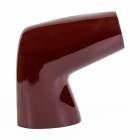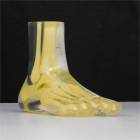RSD Wounded Willy & Damaged Debbie Teaching Training Phantom System
Product Description
Anthropomorphic Phantoms for Military Training in Radiography
- 60 traumas and pathologies divided between Willy and Debbie
- Can be positioned realistically
- Human technical factors
- Unlimited repetition of views without human exposure
- Radiographs that permit evaltuation of trainee performance
- Teaching/training for civilian hospital ER's
Willy and Debbie Teaching/Training Capabilities and Differences
- Wounded Willy and Damaged Debbie demonstrate and evaluate positioning and imaging techniques, including kVp, mAs, contrast, optical density, OFD and TFD. Their radiographs are optically equivalent to humans in density and contrast.
- The most obvious difference between Willy and Debbie is the complement of traumas and pathologies assigned to each. Another difference is Debbie has female breasts, while Willy has natural male chest contours. Debbie is fitted with a wig, while Willy is bald. They are dressed in camos for military training and in jumpsuits for civilian training.
Realism of Traumas and Pathologies: There is no single, unique description of any of their traumas and pathologies. Rather, there are limitless variations among a broad range of casualties. The most meaningful judgment of the realism of trauma and pathologies are those based on long radiographic experience across the spectrum of casualties.
Dimensions: The size and weight of PIXY are also used for WILLY and DEBBIE. They are small adults. Since technologists must learn to work with patients of all sizes and weights, a smaller phantom is as valid for training as a larger phantom, and position is facilitated. Each is 5 ft. 1 in. tall (156 cm) and weights 105 lbs (48 kg).
Anatomy: WILLY and DEBBIE are articulated at the neck, shoulders, elbows, hips and knees. Fractures of the left shoulder and left hip are located in DEBBIE. To minimize handling problems, all other traumas of the arms and legs are located in WILLY and on the right side of DEBBIE. The articulations provide a broad range of positioning of capabilities, even the "frog position". Head, Anatomic and Mechanical necks are interchangeable between WILLY and DEBBIE.
Lungs are molded of durable materials with radiodensities matched to humans in a median respiratory state. Animal lungs matching the human in size and blood vessels are available, but they are oriented towards research rather than training.
Soft Tissues: WILLY and DEBBIE have solid soft tissues that are hard and rigid. They cannot be palpated to locate traumas. However, radiological technologists are generally informed by the physician as to the views to be taken. The manual provides this information to instructors.
Skeletons: RSD-Manufactured skeletons are used rather than natural human skeletons. The latter are generally unavailable and usually consist of an assortment of bones ranging from children to adults of ages for which osteoporosis becomes a factor.
RSD skeletons are not to be confused with plastic skeletons for teaching anatomy. These skeletons are made to fit the soft-tissue molds precisely. They have spongiosa moldings within marrow cavities and outer cortical bone. Both constituents meet the internationally-accepted standards for radiodensity and specific gravity.
About this Brand

After developing the first anthropomorphic test dummy for the aviation industry in the late 1940's, the RSD team directed its impactful R & D to revolutionize healthcare diagnostic imaging with anthropomorphic phantoms. RSD diagnostic imaging phantoms are routinely used to perform quality control on imaging equipment and to train healthcare professionals in best practices. The company has become the leading supplier of QC and educational solutions for medical diagnostics and radiation therapy, featuring products such as anthropomorphic phantoms and dosimetry verification phantoms.
Specifications
| Manufacturer | RSD |
|---|---|
| Country of Manufacture | United States |
| Item Ships From | California |











